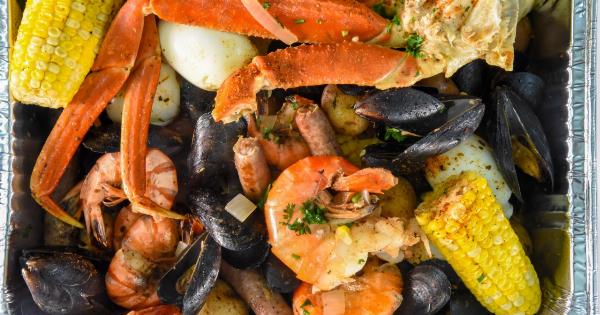As more people adopt a vegetarian or vegan lifestyle, it is essential to find alternative protein sources to maintain a healthy and balanced diet.
While meat is traditionally seen as the primary source of protein, there are numerous herbal alternatives rich in protein that can be easily incorporated into one’s diet. These herbal protein sources not only provide the body with essential amino acids but also offer various health benefits. Here are 20 herbal protein sources for a healthier and meat-free lifestyle:.
1. Quinoa
Quinoa is a versatile grain-like seed that contains all the essential amino acids, making it a complete protein source. It is also high in fiber and rich in minerals like magnesium, iron, and zinc.
This herbal protein source is a great addition to salads, soups, and as a substitute for rice.
2. Hemp Seeds
Hemp seeds are a complete protein source and are easily digestible. They are rich in omega-3 fatty acids, which are essential for brain health. Hemp seeds can be sprinkled on smoothies, salads, or used to make dairy-free milk.
3. Chia Seeds
Chia seeds are not only a fantastic source of protein but also high in fiber, making them a great food for digestion. They are also rich in antioxidants and omega-3 fatty acids.
Chia seeds can be added to cereals, yogurt, smoothies, or used as an egg substitute in baking.
4. Lentils
Lentils are a protein-packed legume that is also high in fiber and low in fat. They are rich in folate and iron, making them a great choice for vegetarians and vegans.
Lentils can be used in soups, stews, salads, or as a meat substitute in various recipes.
5. Chickpeas
Chickpeas, also known as garbanzo beans, are an excellent herbal protein source and are commonly used in plant-based diets. They are rich in fiber, iron, and magnesium. Chickpeas can be used to make hummus, added to salads, or used in curries and stews.
6. Spirulina
Spirulina is a blue-green algae that is considered a superfood due to its high protein content and various health benefits. It is also a great source of vitamins and minerals. Spirulina can be taken as a supplement or added to smoothies and juices.
7. Tempeh
Tempeh is a fermented soybean product that is a staple in vegetarian and vegan diets. It is high in protein and also contains probiotics, which are beneficial for gut health. Tempeh can be grilled, stir-fried, or used in sandwiches and salads.
8. Seitan
Seitan is made from wheat gluten and is a popular meat substitute for vegetarians and vegans. It is high in protein and low in fat. Seitan can be used in stir-fries, curries, and sandwiches as a replacement for meat.
9. Nutritional Yeast
Nutritional yeast is a deactivated yeast that is a rich source of protein, vitamins, and minerals. It has a cheesy and nutty flavor, making it a popular ingredient in vegan cheese substitutes.
Nutritional yeast can be sprinkled on pasta, popcorn, or used in savory dishes.
10. Edamame
Edamame, young soybeans, is a rich source of plant-based protein and is also high in fiber. They are packed with vitamins and minerals like folate, iron, and vitamin K. Edamame can be enjoyed as a snack, added to salads, or used in stir-fries.
11. Green Peas
Green peas are a nutritious vegetable that is not only high in protein but also packed with vitamins and minerals. They are a great source of dietary fiber and antioxidants.
Green peas can be used in soups, salads, stir-fries, or enjoyed on their own as a side dish.
12. Pumpkin Seeds
Pumpkin seeds are a nutritional powerhouse and an excellent source of plant-based protein. They are also rich in healthy fats, magnesium, and zinc. Pumpkin seeds can be enjoyed as a snack, sprinkled on salads, or used in baked goods.
13. Amaranth
Amaranth is a gluten-free grain that is high in protein and packed with essential amino acids. It is also a good source of fiber, iron, and calcium. Amaranth can be cooked and used as a side dish, added to soups, or used in baking.
14. Black Beans
Black beans are a versatile legume that is not only a great source of protein but also high in fiber and antioxidants. They are also rich in iron, folate, and magnesium.
Black beans can be used in soups, stews, salads, or as a filling for tacos and burritos.
15. Buckwheat
Buckwheat is a pseudocereal that is gluten-free and high in protein. It is also rich in essential amino acids, fiber, and minerals like manganese and magnesium.
Buckwheat can be used in various recipes, including pancakes, porridge, and as a substitute for rice or pasta.
16. Sunflower Seeds
Sunflower seeds are a delicious and nutritious herbal protein source. They are packed with protein, healthy fats, and vitamin E. Sunflower seeds can be enjoyed as a snack, sprinkled on salads, or used in baking.
17. Mung Beans
Mung beans are a legume that is often used in Asian cuisine. They are an excellent source of protein, fiber, and antioxidants. Mung beans can be sprouted and added to salads, soups, stir-fries, or used to make bean sprout dishes.
18. Peanuts
Peanuts are not only a tasty snack but also a good source of plant-based protein. They are rich in healthy fats, antioxidants, and various vitamins and minerals.
Peanuts can be enjoyed as a snack or used in various dishes, including stir-fries and peanut butter.
19. Brown Rice
Brown rice is a whole grain that is high in protein, fiber, and various essential nutrients. It is also gluten-free and a great source of energy. Brown rice can be enjoyed as a side dish, used in stir-fries, or incorporated into salads.
20. Green Leafy Vegetables
Green leafy vegetables like spinach, kale, and broccoli are not only packed with vitamins and minerals but also a surprising source of protein. They are also high in fiber and antioxidants.
Green leafy vegetables can be used in salads, stir-fries, smoothies, or as a side dish.




























